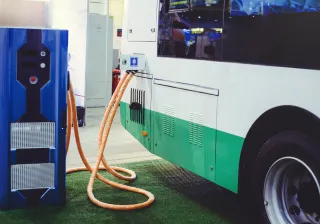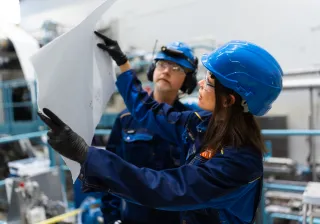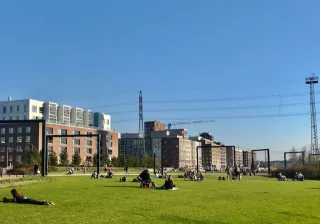Nysse traffic provides public bus services in Tampere and in seven neighbouring areas. The first electric buses were introduced in the area in 2016, and a bigger step towards electric bus traffic is coming soon. Tampere took advantage of VTT Smart eFleet simulation service in preliminary studies for electrification.
Nysse traffic services have been used annually by about 41 million passengers, but the Covid-19 pandemic has affected these numbers. The next change is expected during the summer as the Tampere tram is introduced as a trial run for passengers. “The tramway will replace 30 city transport buses, about 10% of the current fleet”, says Planning Manager Juha-Pekka Häyrynen from Nysse traffic planning.
Alongside the introduction of rail traffic, Tampere is also planning to convert to electric bus traffic more extensively. Line 2 has already been driven for five years by electric buses that are charged at one end of the line. Now Tampere is looking into options for moving forward with electrification.
Towards carbon-neutral bus traffic
Municipal objectives and an EU Directive are steering the transition towards electric bus traffic. All municipalities within the scope of Nysse traffic services have committed to achieving carbon neutral bus traffic by 2030 at the latest. “This objective is more ambitious than the EU Directive but does not specify the choice of driving power in buses. The EU Directive, on the other hand, stipulates a certain percentage of electric buses”, Häyrynen explains.
Tampere has examined alternatives to electrification using VTT Smart eFleet simulation solution. The solution is intended to support the planning of the electrification of public transport and the related decision-making. It helps to compare different options, for example from a techno-economic point of view.
“We used the service to model four distinct bus routes. We examined the kinds of situations where fast charging along a route is the most sensible option and ones where it is better to charge the batteries at a charging station at the depot, outside the route.”
No universal solution for charging strategy
The main observation made with the simulation was that the choice of a suitable charging strategy is not self-evident, even though battery technology has evolved enormously and the range allowed by a single charge has been multiplied. “Nevertheless, it's not the best option to have all buses using depot charging. On some bus lines, charging on the route is still the economically sensible choice.”
The point of the simulation service was not to make a detailed comparison of different alternatives or the optimisation of actual traffic. The aim was to find patterns in the big picture and to identify research questions for further investigation. The simulation also included a sensitivity analysis to help prepare for risks.
”Smart eFleet is a useful and functioning tool for this kind of advance planning. Without simulation, it would have been difficult for us to verify the initial facts. Sensitivity studies were an important part of quality assurance for us”, Häyrynen explains.
The VTT team was a reliable partner for the simulation service. The team provided us with expert help and insight for the study.
Significant change in a controlled manner
Planning for the electrification of bus traffic in Tampere is now moving towards decisions on charging strategies. One option is to build charging stations at the end of lines like the existing solution on line 2. Fast charging buses at the depot requires power that the depot of the city operator TKL does not have. This is why a potential new depot location is being investigated. Once a depot decision has been made, the process can move on to solutions concerning the bus lines and equipment acquisitions. This will probably require further background studies.
Switching the driving power to electricity is a significant move in urban bus transport. “Carriers, bus manufacturers and those ordering the service have varying degrees of readiness for involvement in the change, and development moves forward at different paces for various actors. Coordination is a challenge for the transition phase: buses have an operating life of about 15 years and the change in driving power should be implemented in a manner that does not waste investments. This is a change that we plan to carry out in a controlled manner”, Häyrynen says.







